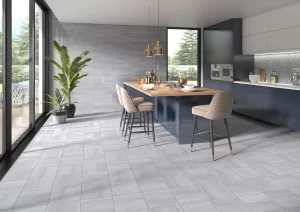Tips For Creating a Low-Maintenance Garden
4 min read
If you’re looking to create a low-maintenance garden, look for plants that are long-lived and don’t require frequent replacement. Avoid annuals and choose bulbs like tulips, crocus, and muscari that will naturalize in the landscape.
A well-planned garden requires little work. Avoid manicured English or French gardens and opt for a more naturalistic style.
Choose Plants That Don’t Need a Lot of Water
A low maintenance garden should be planted with carefree plants, like perennials and shrubs. It’s also a good idea to reduce the lawn area, which is the most work intensive part of the garden. Then replace it with paving or other hardscape materials that are less labor-intensive.
Consider using drought-resistant plants, which require less watering than other varieties. A swath of drought-tolerant pasqueflowers or sedums makes a beautiful and carefree addition to the garden. Other carefree perennials include yarrow and aloe vera.
Planting natives can be even easier, since they have adapted to local weather conditions and soils. Planting meadow gardens is another easy option, which can be used in place of a traditional lawn.
Mulching is another time-saving technique that reduces weed growth and stops the evaporation of water from the soil. Mulch can be made from grass clippings, leaves or compost. It can be applied to all the beds in a garden to cut down on maintenance.
Plant Shrubs and Trees That Don’t Overgrow
Planting a variety of low maintenance shrubs helps create a dynamic garden that requires minimal pruning. Including plants with different foliage colors, blooms, berries and fall color gives the garden plenty of interest throughout each season.
Some large shrubs that are easy to care for include yucca, which grows well in most growing zones and adds a striking color with its fibrous leaves; thornless hydrangea, which requires no trimming to keep it looking great; and eupatorium, an evergreen that displays stunning blue-green foliage and berries in autumn.
When planting a new shrub, it is important to properly prepare the soil. Tilling the soil breaks up clay and helps create air pockets that tree roots need for healthy growth. Adding a high-quality soil amendment such as Calloway’s Tree & Shrub Mix also helps the roots of the shrub grow into the surrounding soil. Avoid planting trees and shrubs too close to overhead utilities. When they are crammed in too tightly, they starve themselves for oxygen and nutrients and will eventually die.
Avoid Plants That Attract Weeds
Weeds are like uninvited guests – they pop up everywhere, hog the food, and take over the party. The best way to prevent weeds from popping up is to use the right plants for your garden.
Replace fussy hybrid tea roses with carefree heirloom varieties, and choose hedging plants such as yew, holly, or privet that don’t require much pruning. Also, avoid planting perennial weeds like bindweed and ground elder that are very difficult to get rid of once they have established themselves.
Try using mulch, pea gravel, or river rock for flower beds and ground cover to reduce the need for watering. In addition, try to stick with native species, which have evolved in your region for thousands of years and are adapted to your local climate and soil conditions. Natives also provide vital habitat for local wildlife. Lastly, remember to enrich your soil with organic matter every chance you get; soil scientists believe that fewer weed seeds germinate when the soil is well fed.
Avoid Plants That Need to Be Supported
If you are looking for a low maintenance garden, avoiding plants that need to be supported should be high on your list. These include plants that are prone to drooping, such as roses and clematis, as well as those that need aggressive restraint, like climbing wisteria.
Instead, opt for self-clinging climbers such as ivy or Virginia creeper which grow up walls and fences naturally without the need for wires or trellises. To support these, use long green twist ties or garden wire, which are virtually invisible once the plant has grown around them.
Aim for a minimalist landscape design, with clean lines and bold curves, which will make it easier to mow your lawn. Replace your grass with gravel pathways which can also help to reduce weeds and prevent soil from overheating during hot weather. Mulching your garden is another simple but effective way to reduce maintenance tasks. This is because it stops weeds from growing, as well as stopping water from evaporating too quickly.

















